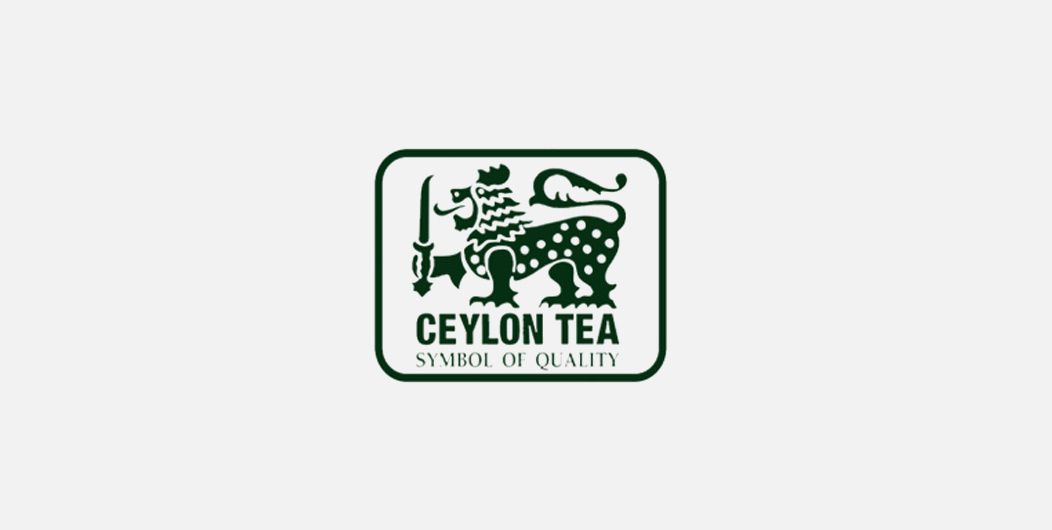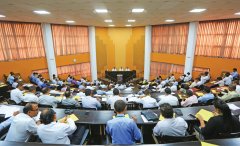Ceylon manor fine tea where can I buy? Sri Lanka Colombo Tea Auction House History Story
Colombo is a veritable Sri Lankan tea trade center. About 320000 tons of tea sold by Sri Lanka to the world each year are shipped from the port of Colombo. Sri Lanka's top tea management agency-Sri Lanka Tea Bureau, the largest international tea auction house-Colombo Tea auction House, tea brokerage company, hundreds of tea companies as well as trading companies, packaging companies, logistics and warehousing companies, shipping companies, quality certification companies and testing agencies related to the tea industry have gathered in Colombo. Colombo has been the center of the tea trade since the British founded the tea industry in Ceylon in 1867. It was not until Ceylon became independent in 1948 that the British withdrew. Since then, Sri Lanka has continued to regard Colombo as the center of the tea industry, and Colombo plays an extremely important role in the international tea commercial market. Colombo Tea auction House is one of the most important players. If you want to understand the history and process of Sri Lankan tea trade, Colombo Tea auction House must visit. Colombo Tea auction House is located in the Ceylon Chamber of Commerce building at 50 Navamavasa Street in Colombo. Ceylon tea was originally shipped to London, England for sale. In 1873, the first 23-pound tea produced by the Lule Kendra Tea Farm was sent to London, which was the first time Ceylon tea entered England. In 1875, a brokerage firm in London, England, recorded two cases of "Ceylon tea" in its catalogue for the first time. Ceylon tea really entered the London tea auction on October 28, 1878, when 10 cases of Ceylon OP and Bai Hao race black tea and 277 cases of Indian tea were sold, followed by tea from Ceylon de Gala, Windsor Forest, West Hall, Hope and Sogma tea houses. In 1884, 2.5 million pounds of Ceylon tea was sold at the Tea auction House in London. Exports from Ceylon Tea Garden reached 9 million pounds in 1886, 15 million pounds in 1887 and 34 million pounds in 1890. Somerville Company, a brokerage firm established in 1878. The Ceylon tea auction initiated and presided over by its founder, Mr. Somerville, was held at home for the first time, and although many companies opposed the local auction, many buyers were looking forward to it. There are five pieces of tea for auction, including No. 1 from ungraded black tea produced by Kabala Tea Farm, No. 2, No. 3 and No. 4 from Agaz Tea Farm, and No. 5 from Odavara Tea Farm production of Baimao Tea and BP Tea, totaling 140 cases. Mr. Somerville stood on the high table, holding a gavel in his hand, glancing excitedly at the gathered buyers, expecting them to hold up their cards to buy his carefully prepared tea. When he quoted the first round price, there was no buyer's response, which embarrassed Mr. Somerville. After several efforts, the first order of Ceylon tea produced by the 999-pound Kabala teahouse sold for 45 cents a pound. Unfortunately, the 1250 pounds of tea provided by the Agaz and Odavara tea farms did not win the favor of buyers. This auction opened a new chapter in the local auction of Ceylon tea. At that time, the Ceylon Observer reported on the Ceylon tea public auction as follows: "the first Ceylon tea public auction was held in the office of Somerville, and some buyers came. There is a large gap in the understanding of tea prices between sellers and buyers, which will be improved in the future. We congratulate Somerville as a pioneer in home market sales and believe that they will open up a prosperous future. "

The local public auction of Ceylon tea was questioned and opposed by many businessmen at that time, which led to the first local Ceylon tea auction was not very successful, which led to the stagnation of Ceylon tea auction for more than 10 years. At that time, Ceylon tea was mainly shipped to London Tea auction House for auction, and a small amount was sold to foreign buyers. Until 1885, Forbes and Walker held a second tea auction, with a total of 14 tea auctions. Since then, Ceylon has no record of tea auctions. However, Somerville and other tea brokers insist that auctions in Ceylon are the best way to sell Ceylon tea. At that time, brokers of sales brokers such as Somerville, John, Gordon, Forbes and Walker, Bartlett, Cole and Waldock were constantly expanding the business of growing and exporting tea. Ceylon's tea production also increased rapidly at that time. By the summer of 1885, many brokers had acquired enough tea export business that they were confident that the conditions for local tea auctions in Ceylon were ripe and the time had come to set up tea auction houses. But in fact, Ceylon's local tea auction is still blocked by many exporters. Until 1894, the Ceylon Chamber of Commerce organized and established the Colombo Tea traders Association (CTTA), and referring to the experience of Calcutta Tea auction House in India, Colombo Tea auction House was officially established and operated in the same year, its goal is to promote the common interests of buyers and sellers in the Colombo tea market. The original Colombo Tea auction House held its tea auction once a week in the auction hall of the Ceylon Chamber of Commerce Building in Colombo. Since then, Colombo tea auctions have become increasingly popular with exporters and buyers. By the 1930s, about half of Ceylon's tea was sold through tea auction houses, while the other half was still shipped to London tea auction houses.
Important Notice :
前街咖啡 FrontStreet Coffee has moved to new addredd:
FrontStreet Coffee Address: 315,Donghua East Road,GuangZhou
Tel:020 38364473
- Prev

Popular science | does milk tea contain caffeine? How long will caffeine be metabolized in the body?
Let's go for coffee at three o'clock in the afternoon. No, I'm afraid I can't sleep at night after drinking coffee. Let's go and have a cup of milk tea. In the afternoon, I wanted to have coffee and tea with my friends, but I was unexpectedly declined? The reason is that the caffeine in coffee interferes with sleep. But my best friend is afraid that she can't sleep or drink.
- Next

Fine Sri Lanka Ceylon black tea expensive? Colombo Tea Auction House Tea Auction Process Guide
Colombo Tea Auction House holds two weekly auctions, Tuesday 8:30-16:30 and Wednesday 8:30 - 12:30. The Sri Lanka government stipulates that 90% of the tea produced by tea producers must be sold through auction houses, that is, more than 90% of the tea produced in Sri Lanka is sold through auction houses.
Related
- The milk tea cup becomes smaller?! Overlord Tea Girl launches a new "Return to Yunnan" series
- Accused of selling counterfeit and high-priced coffee beans! Well-known boutique coffee brand "Oukelao" bowed and apologized!
- How to make espresso dumplings? Can I eat coffee and glutinous rice balls together?
- Save the unformed and stagnant powder cakes in one second! What is the problem with stagnant water in the powder bowl of the espresso machine?
- What does hand-brewed coffee stop mean? Why is it not recommended to make coffee by hand?
- Is it normal to smell like coffee? Why does coffee smell like alcohol? What's wrong with the strong smell of cold extract ice dripping ice brewed coffee?
- How to solve the problem that hand-brewed coffee extraction takes too long? Why is the water flowing so slowly when making coffee?
- The main points of making Australian white coffee, the proportion details, how does Australian white properly foam and blend the flowers?
- Can ice water make cold extract coffee? What is the difference between room temperature water and ice water for making cold coffee?
- What milk is best for making latte and white Dirty coffee? What is the difference between different brands of fresh milk and pure milk for making coffee?

